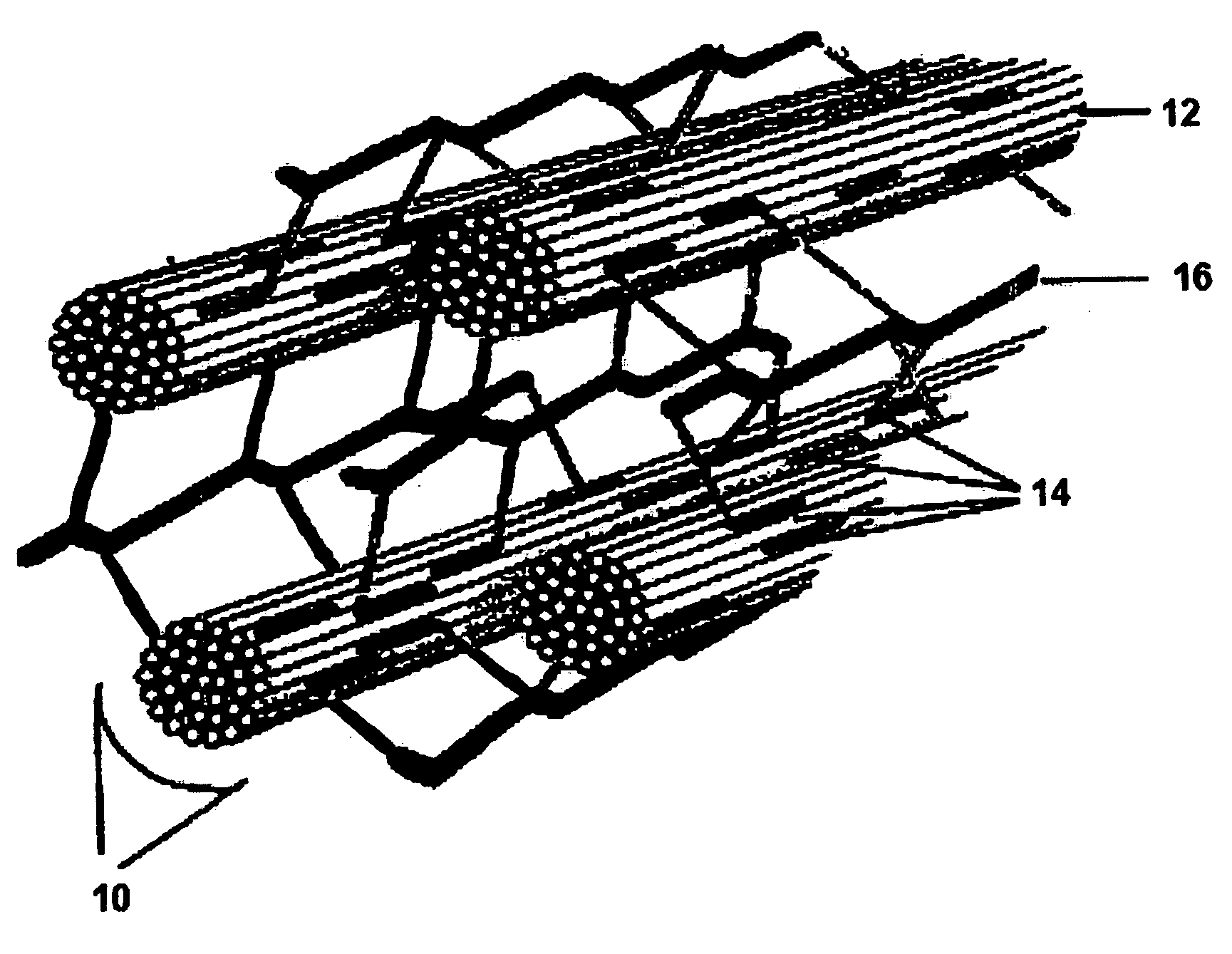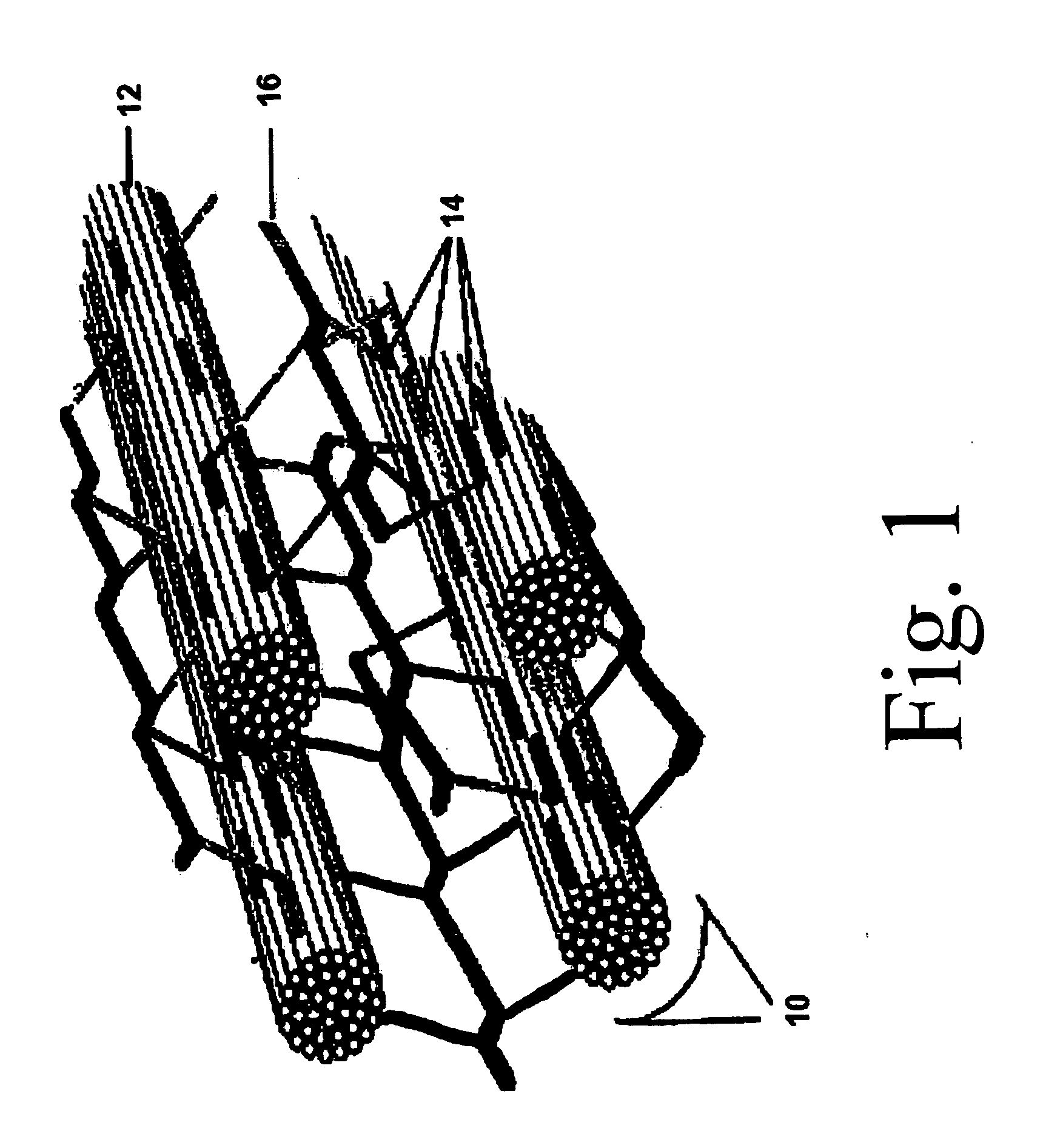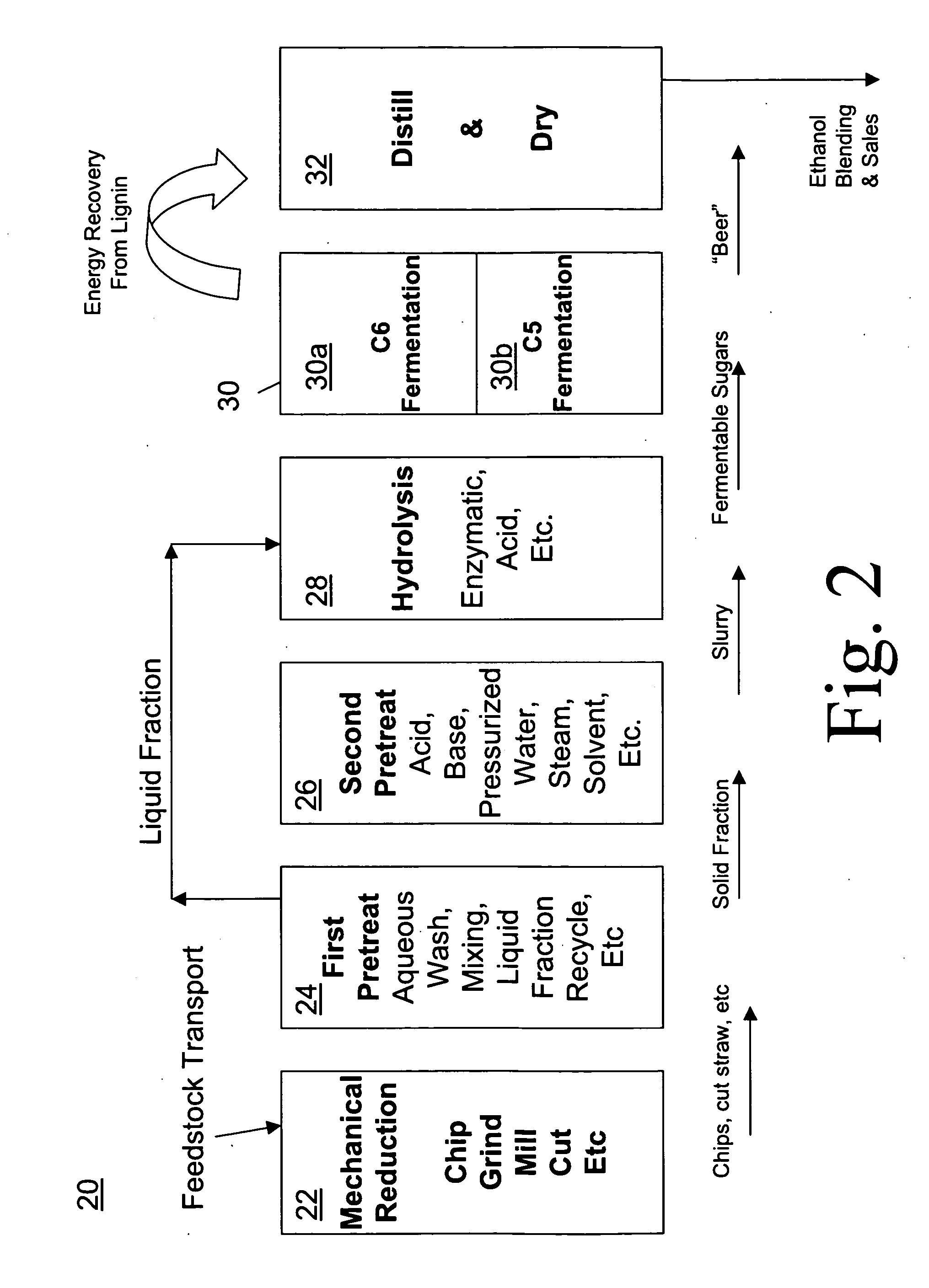Treatment Systems and Processes for Lignocellulosic Substrates that Contain Soluble Carbohydrates
a technology of lignocellulosic substrates and treatment systems, applied in the direction of biofuels, fermentation, etc., can solve the problems of high percentage of the overall energy usage and capital cost in the ethanol plant, and achieve the effect of reducing energy usage and associated costs, reducing overall energy usage and capital costs, and increasing beer ethanol concentration
- Summary
- Abstract
- Description
- Claims
- Application Information
AI Technical Summary
Benefits of technology
Problems solved by technology
Method used
Image
Examples
example i
[0043]FIG. 4 is a graph representing sugar accumulation as measured during consecutive batch recycling of the liquid fraction, and in accordance with an embodiment of the present disclosure. The biorefining process 20 (illustrated in FIGS. 2 and 3) was operated in batch mode on ryegrass straw. The liquid fraction was collected from a first batch and a first batch sample was taken. The liquid fraction was recycled and used to collect soluble carbohydrates from second and third batches. Second and third batch samples were taken following the second and third batches, respectively. The first, second and third batch samples were analyzed by liquid chromatography to determine the concentrations of soluble carbohydrates (e.g., fructose, glucose, sucrose, fructo-oligosaccharides [FOS]) in the respective batch samples. Referring to FIG. 4, the liquid chromatography data show an increase in concentration for all soluble sugars during successive batches.
example ii
[0044]FIG. 5 is a graph comparing soluble carbohydrate concentration in the liquid fraction to soluble carbohydrate retention in the solid fraction as calculated for consecutive batches of recycled aqueous wash solution, and in accordance with an embodiment of the present disclosure. As the model shows in FIG. 5, the soluble carbohydrate concentration substantially increases as the liquid fraction is recycled during batch mode operation. The model also shows that while the carbohydrate concentration increases the soluble carbohydrate loss due to “drag-out” (e.g., liquid fraction retention, unreleased soluble carbohydrates, etc.) increases as well.
[0045]For a given biomass conversion facility, optimum operating conditions (e.g., the amount of recycled liquid, the rinse temperature, the rinse chemistry, etc.) for the first pretreatment process step 24 can be determined by considering some or all of the following: 1) minimizing losses of usable soluble carbohydrates through “drag-out” ...
PUM
| Property | Measurement | Unit |
|---|---|---|
| temperature | aaaaa | aaaaa |
| temperature | aaaaa | aaaaa |
| pH | aaaaa | aaaaa |
Abstract
Description
Claims
Application Information
 Login to View More
Login to View More - R&D
- Intellectual Property
- Life Sciences
- Materials
- Tech Scout
- Unparalleled Data Quality
- Higher Quality Content
- 60% Fewer Hallucinations
Browse by: Latest US Patents, China's latest patents, Technical Efficacy Thesaurus, Application Domain, Technology Topic, Popular Technical Reports.
© 2025 PatSnap. All rights reserved.Legal|Privacy policy|Modern Slavery Act Transparency Statement|Sitemap|About US| Contact US: help@patsnap.com



